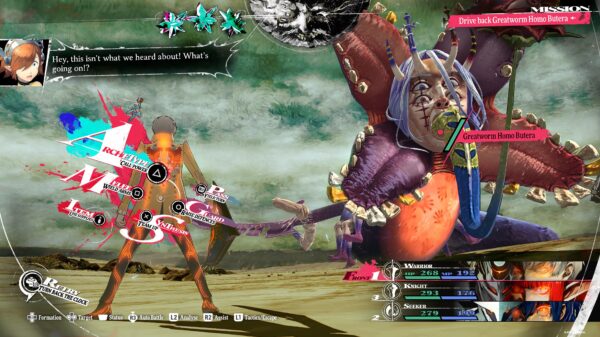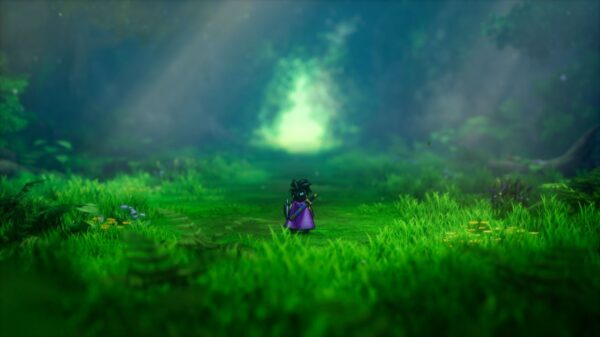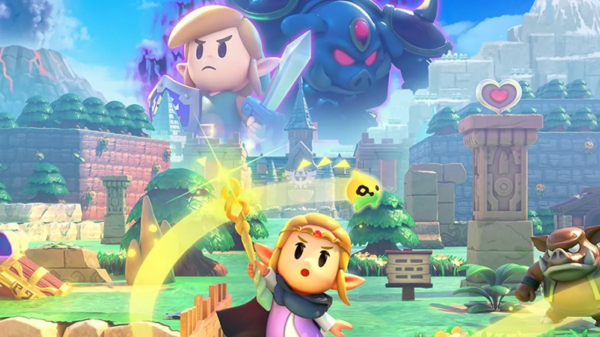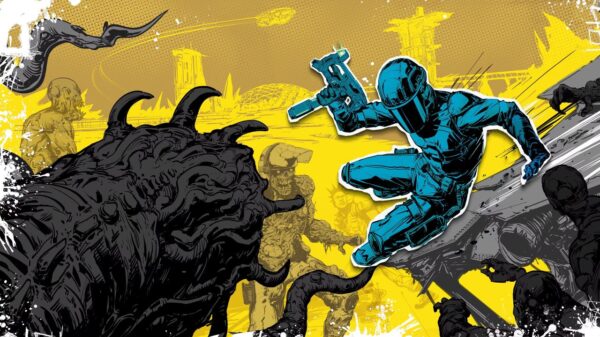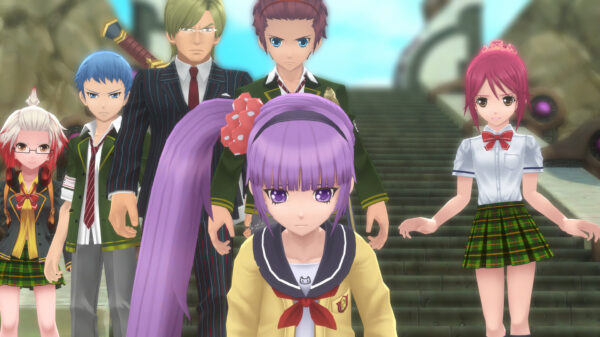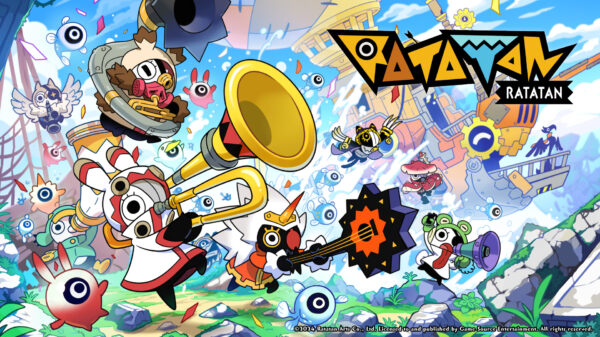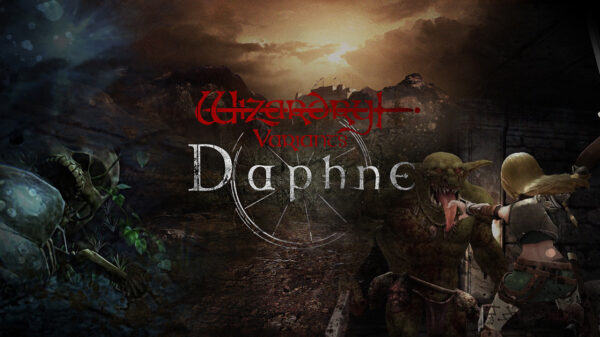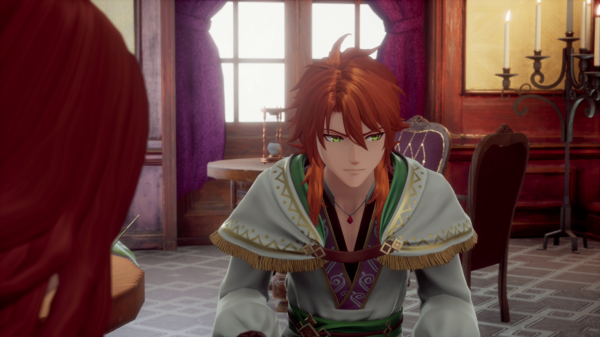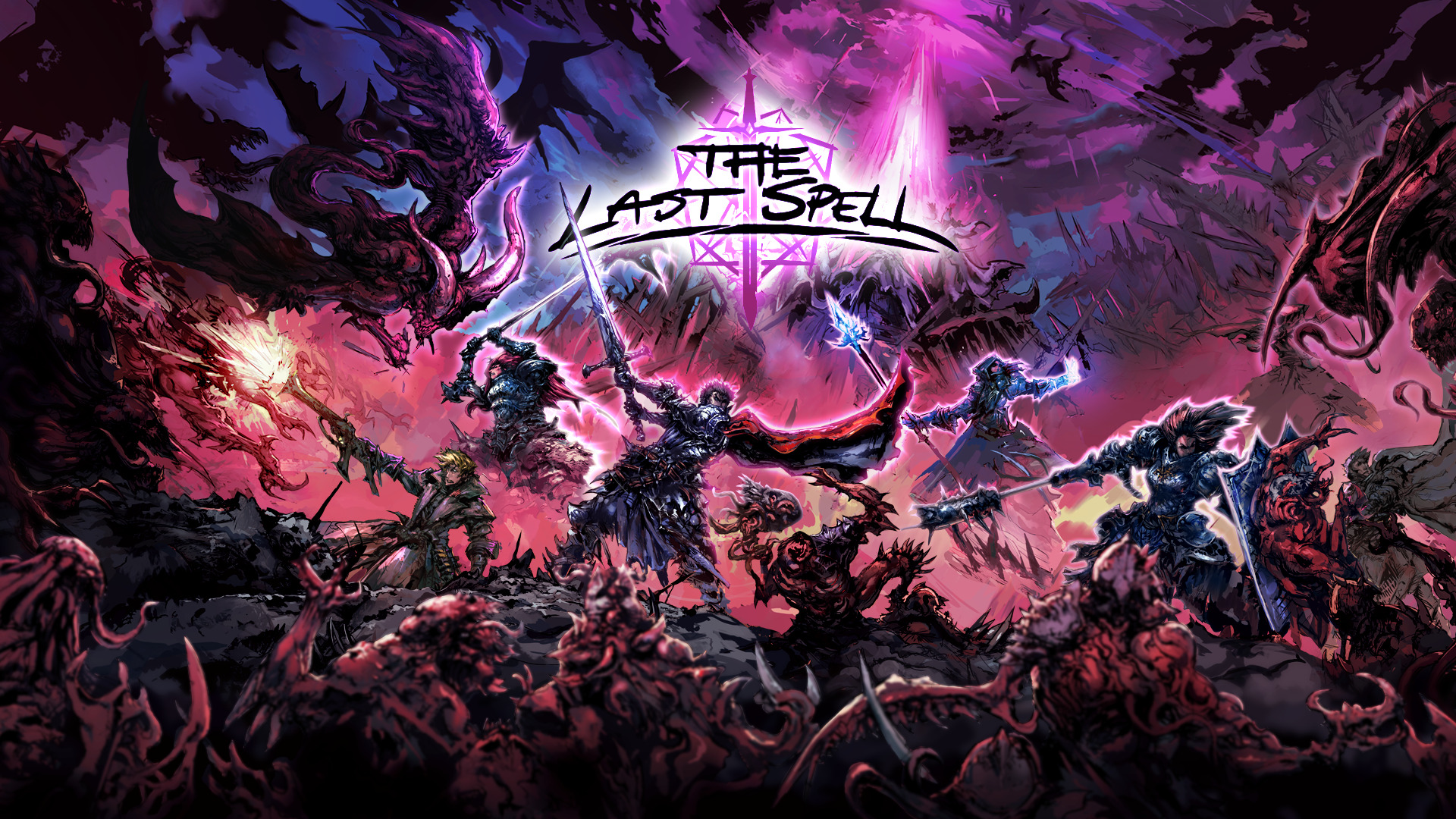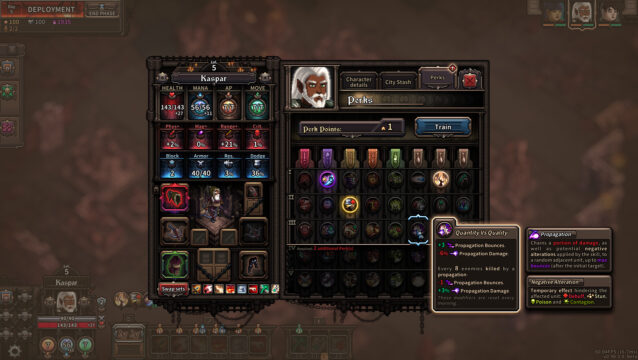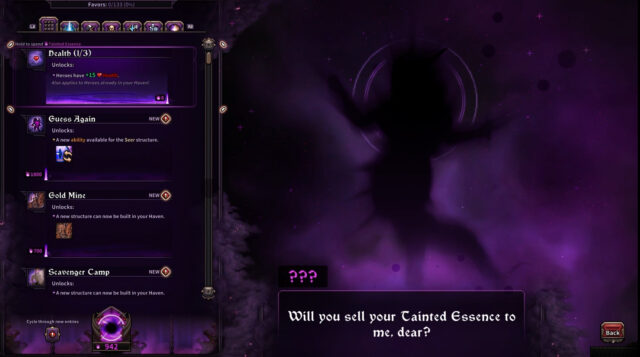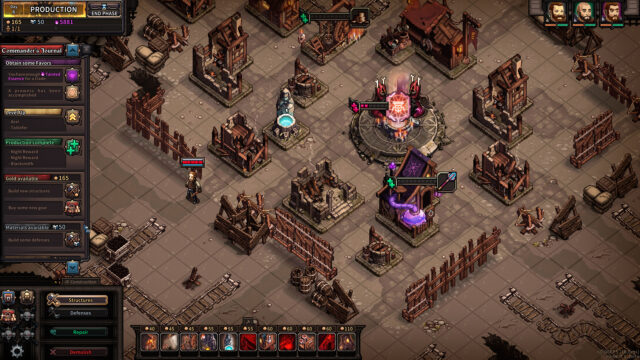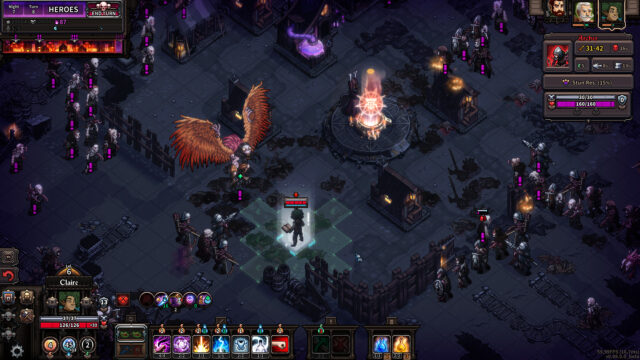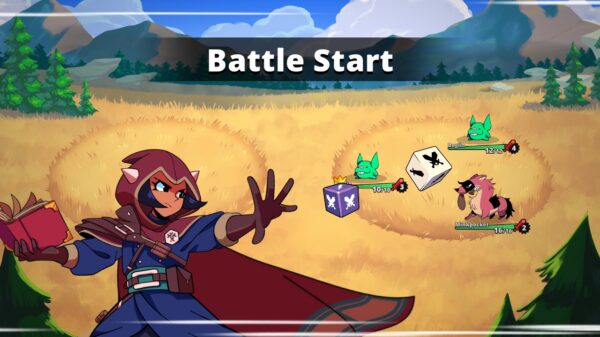Remember the last spell we cast? It was forbidden purple magic, cast by an Archmage at a neighboring town. So a king ordered his mages to use purple magic. This was considered a bad move because as soon as the use of purple magic stopped, a purple mist appeared. The people that survived the wonton purple destruction banded together to survive as, from the mist, hordes of monsters appeared every night. Right now, these people are looking for a new commander. Could it be you? Well, if you pick up The Last Spell, yes, it will be you.
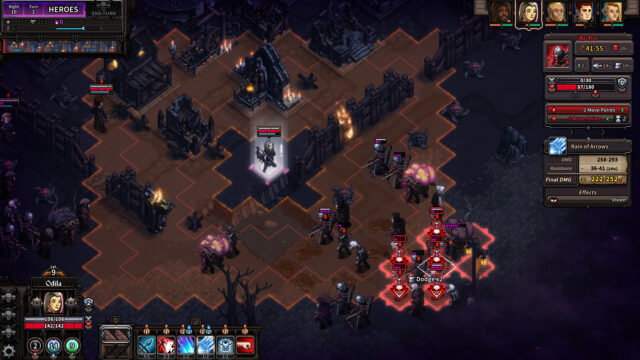
The Last Spell
Developer: Ishtar Games
Price: $24.99
Platform: Nintendo Switch, PC (reviewed), Playstation 4/5
MonsterVine was provided with a Steam code for review.
The Last Spell is a tactical RPG, a city builder, and a roguelite. While traditional tactical RPGs would normally have two armies of similar size or only a slight disparity in size fighting each other head on. In The Last Spell, it will generally be three or four vs. over a hundred. As the Clawers emerge from the mist, your limited warriors must defend the remnants of a city surrounding a lil’ mage circle of mages trying to banish magic forever. If you can survive the nights while they cast their last spell, you might be able to save some local havens and eventually, the world.
Like any good tactical RPG, The Last Spell takes place on a square grid. Each town you intend on saving is called a haven and as you take control of your haven, you’ll be given three warriors at random. Though the warriors themselves are randomized, you’ll always be given a melee unit, a ranged unit, and a caster unit. There are a fair amount of weapons in the game and each weapon determines what actions the unit can take. You can also mix and match weapons, opting to use two one-handed swords instead of a sword and shield. Your units have action points, mana, and movement points to determine what they can do and where they can be on the battlefield.
The Last Spell is split up into 3 phases. The first phase is the production phase. This is where you’ll spend time buying buildings and gear, placing defenses, and using various building actions. Initially, buildings and defenses are very simple. You’ll have houses to build that provide workers, a shop, and an inn. Workers can be used to remove ruined structures for gold and materials or corpse piles for gold, materials, tainted essence, or items. The more enemies killed in an area, the bigger the corpse pile, and the more rewards available. Tainted essence is a currency used in the Oraculum to purchase more permanent upgrades.
When you’re introduced to the Oraculum it’s presented as twin souls providing a contract to assist you in saving the world. The twins are purple and orange. The purple twin provides favors, these are permanent upgrades to your troops and havens. Permanent upgrades include new buildings to purchase, new gear provided by said buildings, and unit upgrades like permanent health and mana or mana regenerated daily. The orange twin’s favors are more akin to achievements. You’re still rewarded but instead of spending tainted essence on these favors, you’re required to complete a task before they’re unlocked. For example, spend X action points casting skills provided by Swords. Likewise, you’ll unlock different types of upgrades here such as units starting with a helmet equipped or even unlocking new havens.
Once you unlock the Inn, you’ll be able to start recruiting new units to your havens and then the game really starts to hit its stride. The deployment phase allows you to place your units around the map, as close or as far from the mist as you want. Then, it’s time for the battle phase. You’ll be given a flag with up to 3 stars on them determining how many enemies will be coming from that direction. This is where things get dicey. If you plan poorly, or in my case, averagely, you might not have enough heroes to cover every direction enemies are coming from. Luckily for situations like that, we have defenses.
I dig how The Last Spell handles defensive structures. Primarily, they use a separate currency from just about everything else, something called materials. Also, as Clawers enter your city, it raises the panic level of the town, affecting the rewards you receive. It’s in your best interest to avoid panic. Luckily, Clawers will focus on defenses in front of or around them as one of their primary targets. This allows you to build walls and gates around your haven in high traffic locations to avoid allowing them in the haven for too long. Eventually, you begin to unlock traps and defensive structures like ballistas and catapults.
My time spent with The Last Spell gave me that roguelike dopamine hit, as intended. Though, initially, I was very put off by the gameplay structure. However, each subsequent replay had me invested in the game more and more. Different weapon combinations combined with assisting defensive structures and character quirks kept things fresh enough that no run was the same. Unlocking new permanent upgrades made things slightly easier but the game is balanced in such a way that even a big swing in tainted essence won’t knock things too off balance. I should note, I am very bad at this game.
Just about every foray into The Last Spell had me making dozens of mistakes during the battle phase and having to make up for them in the production stage. Surprisingly, to me, this balanced out. I managed to make small amounts of progress every run. I started to learn what weapon combos I liked to have and how best to split up my small sortie when I had multiple enemies attacking at once. The learning curve in The Last Spell is gradual enough and matches the pace of the progression. I never once felt like the game threw more at me than I could handle when it came to learning how the game works. When it came to enemies, the game always threw more at me than I could handle.
While most of my time was spent panicking, I did enjoy the fast paced action of The Last Spell. As a fan of the tactical RPG genre, The Last Spell felt both different and familiar. The leveling up process for each hero allowed for bonuses per level, color coding the bonuses green for uncommon and blue for rare, I could make drastic changes to how valuable each hero was on level up. Heroes also gained a perk at level up, giving them advantages like increasing their damage based on 30% of their total mana or giving them an increased 15% stun chance. Likewise, each hero had three quirks that would either help or hinder their abilities. One hero had Knight (+16 Armor, +12% physical damage,) Demonic Blood (+12% Critical, +5% Resistance,) and Smoker (-1 Move Point, -30% Healing Received.) This was a fun way to keep things interesting, allowing for perks and level ups to compensate for a slightly disadvantaged hero.
Following the tradition of popular Tactical RPG franchises, the central conflict in The Last Spell begins small and becomes large throughout the game. In the beginning, this is a tale about survival. Scraping by, doing what you can see the next day. By the end of the game, the story is about thriving. You’re no longer just trying to get breathing room, you’re making plans for the new world. And that’s what it is, a new world. By the end of the game, I had multiple havens in many different states of ruin or construction. When you choose a haven you’ll be given the option to choose omens, a modifier for the current haven run. These can include changes like increased health or mana for heroes or increasing the drop rate of a specific weapon or armor. While each haven has a set number of omen slots to take up, there is an optional boundless mode, which removes that restriction entirely. Enabling boundless mode allows you to equip as many omens for that run as you want.
 The Final Word
The Final Word
There’s a fine balance struck in The Last Spell between Tactical RPG and roguelike. I think Ishtar Games did an excellent job adapting the genre to a roguelike. Initially hesitant at first, The Last Spell won me over with its fast paced battles, hero customization, and light town-management gameplay.
– MonsterVine Rating: 4 out of 5 – Good

